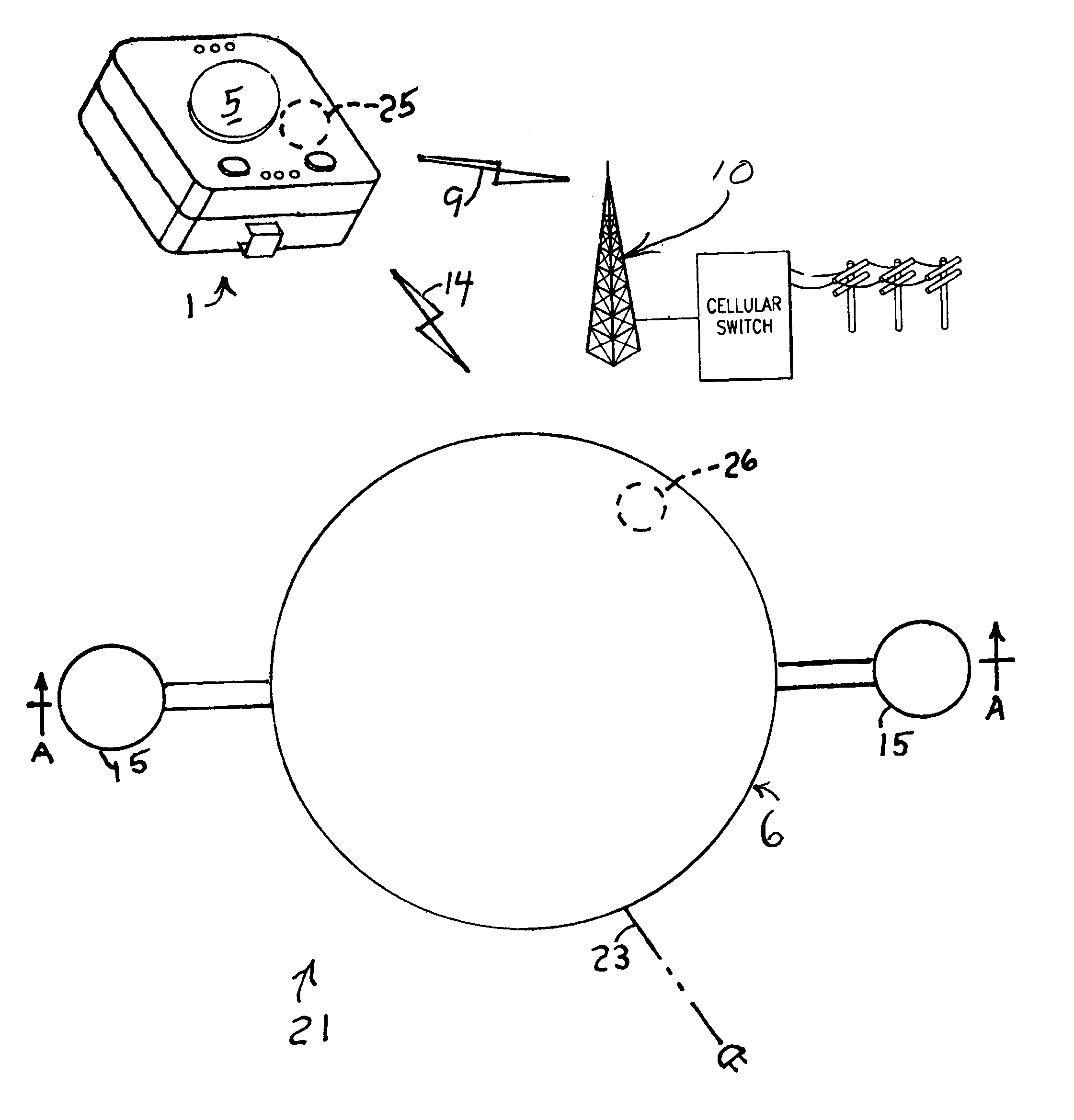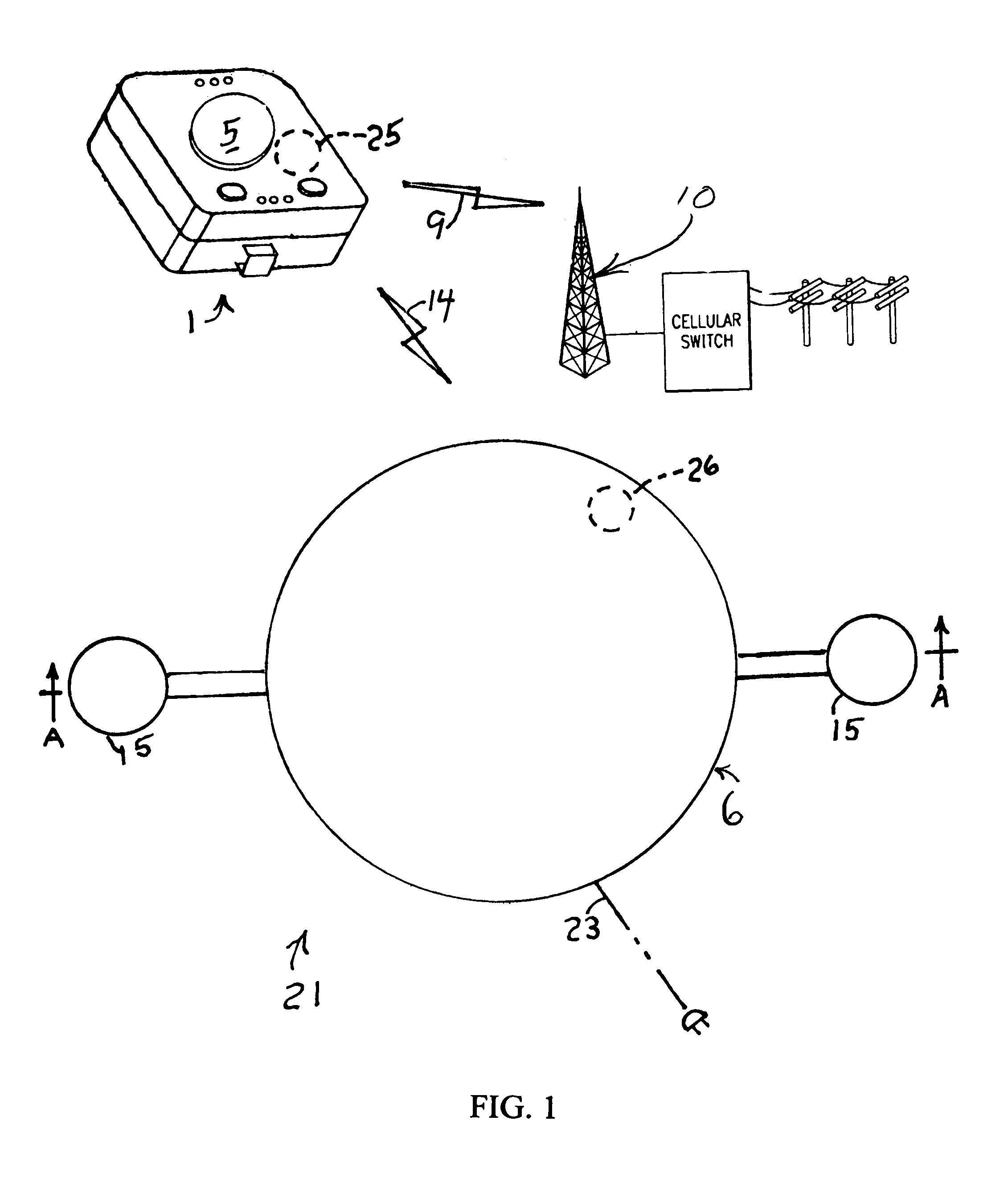Emergency cellular telephone system
a cellular telephone system and emergency technology, applied in the field of emergency cellular telephone systems, can solve the problems of not being able to tell the 911 operator their exact location, not being able to solve the problem of no, and not being able to know which door leads to the caller, so as to facilitate the caller's finding, avoid injury, and be carried or worn conveniently
- Summary
- Abstract
- Description
- Claims
- Application Information
AI Technical Summary
Benefits of technology
Problems solved by technology
Method used
Image
Examples
Embodiment Construction
This invention now will be described more fully hereinafter with reference to the accompanying drawing, in which exemplary embodiments are shown. This invention may, however, be embodied in many different forms and should not be construed as limited to the embodiments set forth here. Rather, these embodiments are provided so that this disclosure will be thorough and complete, and will fully convey the scope of the invention to those of ordinary skill in the art. Moreover, all statements herein reciting embodiments of the invention, as well as specific examples thereof, are intended to encompass both structural and functional equivalents thereof. Additionally, it is intended that such equivalents include both currently known equivalents as well as equivalents developed in the future.
Referring now to the drawing FIGS. 1-7, an emergency cellular telephone system 21 of the invention, as shown diagrammatically in FIG. 1, comprises a remote cellular network 10, a handset 1, and a signalin...
PUM
 Login to View More
Login to View More Abstract
Description
Claims
Application Information
 Login to View More
Login to View More - R&D
- Intellectual Property
- Life Sciences
- Materials
- Tech Scout
- Unparalleled Data Quality
- Higher Quality Content
- 60% Fewer Hallucinations
Browse by: Latest US Patents, China's latest patents, Technical Efficacy Thesaurus, Application Domain, Technology Topic, Popular Technical Reports.
© 2025 PatSnap. All rights reserved.Legal|Privacy policy|Modern Slavery Act Transparency Statement|Sitemap|About US| Contact US: help@patsnap.com



